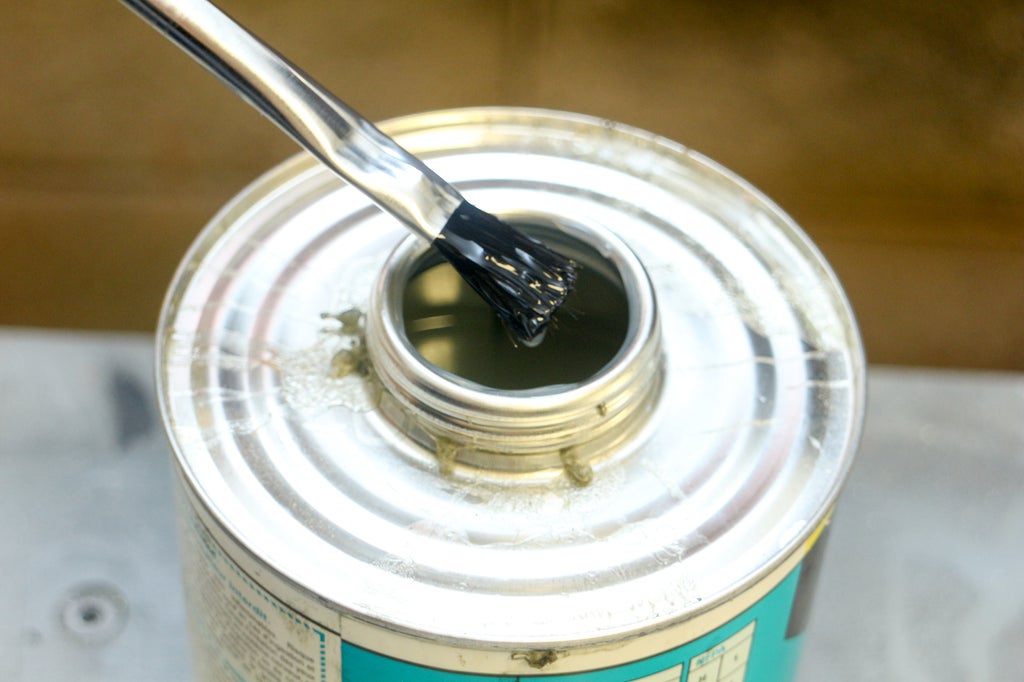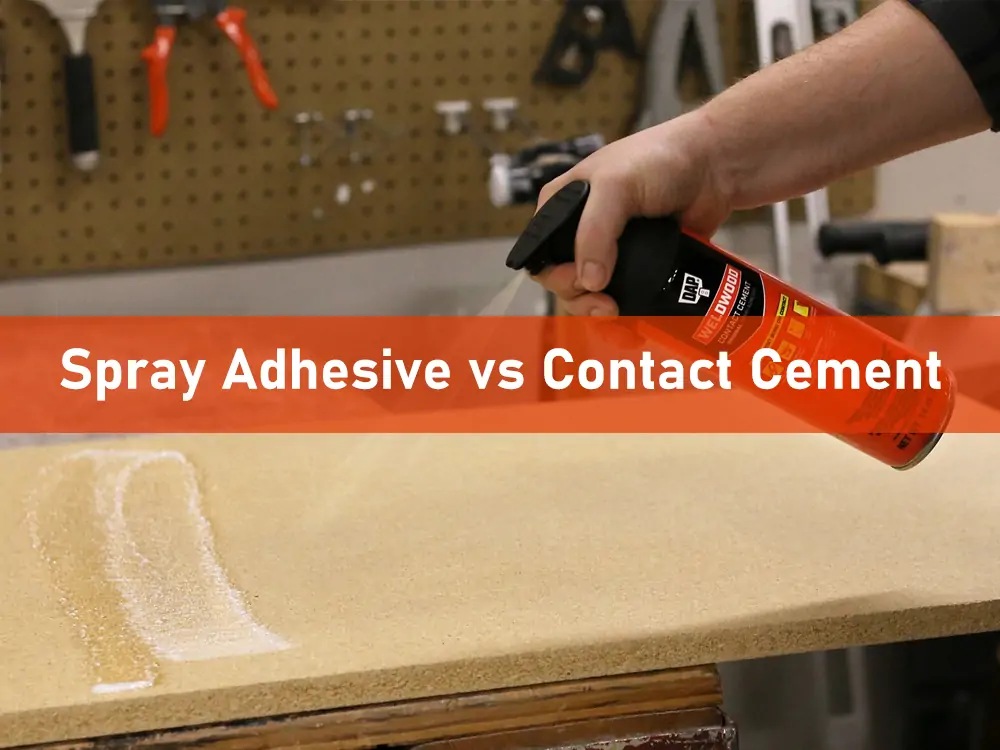Contact cement and contact adhesive are interchangeable terms used to describe a strong adhesive that bonds quickly. Contact cement, also known as contact adhesive, provides a firm and durable bond when two surfaces are pressed together.
Contents
Composition
Contact cement and contact adhesive are both popular choices for bonding materials, offering strong and durable adhesion for various applications.
Understanding the composition of these two adhesives is crucial for selecting the right one for your project.
In this section, we will delve into the materials used in contact cement and contact adhesive, providing valuable insights into their composition.
Materials In Contact Cement
Contact cement is typically composed of a blend of synthetic rubber, solvents, and various additives. The synthetic rubber, known as polychloroprene or neoprene, serves as the primary binding agent in contact cement.
It provides the adhesive with its remarkable strength and flexibility, making it suitable for bonding a wide range of materials, including wood, metal, plastic, and rubber.
Materials In Contact Adhesive
Contrastingly, contact adhesive is formulated with a different set of materials, including synthetic resins, solvents, and fillers.
Synthetic resins such as SBR (styrene-butadiene rubber) or polyurethane play a pivotal role in contact adhesive, imparting excellent bonding strength and heat resistance.
The solvents aid in the application and drying process, while fillers may be added to enhance certain properties of the adhesive, such as flexibility or gap-filling capabilities.

Application Methods
When it comes to bonding materials, contact cement and contact adhesive are two popular choices. Understanding the application methods for these adhesives is essential to ensure the proper and effective use of each product.
How Contact Cement Is Applied?
Contact cement is applied to both surfaces being glued. It is typically spread thinly and evenly using a brush, roller, or spray gun. The adhesive is left to dry until it becomes touch-dry.
Once both surfaces are ready, they are brought into contact, creating an immediate bond. Contact cement creates a strong, instant bond when the two adhesive-coated surfaces come into contact with each other, firmly adhering together.
It’s essential to ensure proper alignment when using contact cement, as repositioning can be challenging once the surfaces make contact.
How Contact Adhesive Is Applied?
Contact adhesive, on the other hand, is applied to both surfaces, much like contact cement. However, contact adhesive is left to become what is known as “tacky” or “dry to the touch,” creating a non-permanent bond.
Once both surfaces are coated and the adhesive has reached the proper tackiness, the materials are carefully aligned and pressed together to create a strong, durable bond.
Unlike contact cement, contact adhesive allows for repositioning and adjustments before the bond is finalized.
Drying Time
When it comes to choosing between contact cement and contact adhesive, understanding the drying time of these products is crucial.
Drying time can impact project timelines and efficiency, so let’s explore the differences in drying time between contact cement and contact adhesive.
Drying Time Of Contact Cement
Contact cement typically dries quite quickly, usually within 15 to 30 minutes. Once applied, contact cement needs to be left to dry until it becomes tacky to the touch.
Drying Time Of Contact Adhesive
In contrast, contact adhesive requires a longer drying time compared to contact cement. Contact adhesive may take anywhere from 1 to 24 hours to fully dry, depending on the specific formulation and environmental conditions.
Strength And Durability
When it comes to choosing the right adhesive for your project, strength and durability are crucial factors to consider. Whether you are bonding two surfaces together permanently or temporarily, you need an adhesive that can withstand the test of time.
In this article, we will explore the strength and durability of both contact cement and contact adhesive, helping you make an informed decision.
Strength Of Contact Cement
Contact cement is known for its exceptional strength when it comes to bonding various materials. With a high bond strength, contact cement establishes a powerful grip between surfaces, ensuring a long-lasting hold.
Its strength is particularly advantageous when working with heavy or large-scale projects, as it provides strong adhesion even under challenging conditions.
The high bond strength of contact cement is due to its unique composition. It contains a solvent-based rubber adhesive that creates a strong chemical bond between surfaces. This type of adhesive is designed for permanent bonding, making it ideal for applications where durability is crucial.
Strength Of Contact Adhesive
Contact adhesive, on the other hand, also offers impressive bond strength that makes it suitable for a wide range of applications. Similar to contact cement, contact adhesive forms a strong bond between surfaces, ensuring that they stay firmly in place.
Contact adhesive is a synthetic rubber-based adhesive that provides excellent initial tack and bond strength. Its ability to create a durable bond is crucial in applications where there might be stress or movement involved.
This adhesive type works well in situations where the surfaces cannot be clamped or held in place for an extended period until the adhesive fully cures.
Durability Of Contact Cement
In terms of durability, contact cement excels in providing long-lasting results. Its resistant nature allows it to withstand both high temperatures and extreme weather conditions.
This makes it highly suitable for outdoor applications, such as bonding materials for construction projects or repairing outdoor furniture.
Contact cement’s durability ensures that the bond remains intact even when exposed to tough environments.
Durability Of Contact Adhesive
Contact adhesive is also designed with durability in mind. It maintains its bond strength even in demanding conditions, making it suitable for various applications.
With its ability to withstand environmental factors, contact adhesive can be used both indoors and outdoors.
The high durability of contact adhesive makes it well-suited for bonding materials with different expansion rates or surfaces subject to frequent movement or vibrations.
This adhesive type can be relied upon to maintain its strength over time, ensuring that your project remains intact.
Versatility
When it comes to choosing the right adhesive for your projects, it’s important to consider its versatility. The ability to adapt and bond to various surfaces can make a significant difference in the success of your endeavor.
In the realm of adhesives, Contact Cement and Contact Adhesive offer distinct features that set them apart.
Let’s delve into the diverse uses of these two adhesive options and explore how their versatility can make your projects a resounding success.
Uses Of Contact Cement
Contact Cement is a highly versatile adhesive that offers a wide range of applications. With its strong bond and heat resistance properties, it is an ideal choice for various materials and situations.
Some common uses of Contact Cement include:
- Bonding laminates, veneers, and countertops
- Attaching trims, mouldings, and edgings
- Joining leather, rubber, cork, and fabric
- Repairing shoes, handbags, and other similar items
- Installing acoustic panels and insulation
Uses Of Contact Adhesive
Contact Adhesive, also known as contact glue, is renowned for its exceptional flexibility and bonding capabilities. Its ability to adhere to an array of materials makes it an invaluable tool for many projects.
Here are some common uses of Contact Adhesive:
- Securing heavyweight materials like wood, metal, and plastic
- Attaching carpet, tiles, and flooring
- Bonding foam, cork, and other porous surfaces
- Fixing decorative trims and panels
- Assembling cardboard, paper, and crafting materials
As you can see, both Contact Cement and Contact Adhesive offer a plethora of applications, making them indispensable for various projects.
From laminates to leather, wood to foam, these adhesives possess the adaptability required to tackle diverse bonding needs.
Whether you are a professional craftsman or a DIY enthusiast, their versatility ensures that you have the right adhesive to achieve exceptional results.
Advantages And Disadvantages
Looking at Contact Cement and Contact Adhesive, both have their own set of benefits and drawbacks that are worth considering before embarking on a project.
Pros And Cons Of Contact Cement
- Pros:
- Strong bonding capability
- Quick drying time
- Cons:
- Requires proper ventilation when used
- Not suitable for high-temperature applications
Pros And Cons Of Contact Adhesive
- Pros:
- Flexible bonding options
- Can be used on various materials
- Cons:
- Requires longer curing time
- May not be as strong as contact cement

Frequently Asked Questions On Contact Cement Vs Contact Adhesive
Is Adhesive The Same As Cement?
Adhesive and cement are not the same. Adhesive is a general term for any substance that bonds materials together, while cement refers specifically to a type of adhesive made from powdered substances like limestone and clay. Both have different properties and uses.
What Is Contact Adhesive Used For?
Contact adhesive is used for bonding materials such as wood, metal, plastic, and fabric.
It provides a strong, durable bond and is commonly used in furniture making, vehicle upholstery, and DIY projects.
Its versatile nature makes it a popular choice for various bonding needs.
What Does Contact Cement Not Stick To?
Contact cement does not stick to non-porous surfaces like metal, plastic, or glass. It also does not adhere well to oily or greasy substances.
It is important to ensure that the surface is clean and dry before applying contact cement for optimal adhesion.
What Is Contact Cement Best Used For?
Contact cement is best used for bonding materials that require a strong, permanent hold, such as wood, metal, and plastic. It works well for laminates, veneers, and rubber.
Conclusion
Choosing between contact cement and contact adhesive depends on your specific project needs. Understanding the differences can help you achieve the best results.
Consider factors like bonding materials, drying time, and application method to make the right choice for your DIY endeavors. Make an informed decision for successful outcomes.
